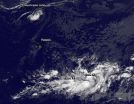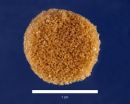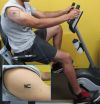(Press-News.org) Infrared satellite imagery from NOAA's GOES-West satellite shows three tropical system s in the Central Pacific Ocean that appears like bookends with Hawaii in-between.
In an infrared image from the GOES-West satellite taken August 13 at 1200 UTC (8 a.m. EDT/2 a.m. HST), Hurricane Julio lies to the north of Hawaii, while two low pressure areas lie to the southeast of the island state. The image was created by NASA/NOAA's GOES Project at NASA's Goddard Space Flight Center in Greenbelt, Maryland.
On August 13 at 0900 UTC (5 a.m. EDT/11 p.m. HST on Aug.12) the center of Hurricane Julio was located near latitude 30.0 north, longitude 158.4 west. That's about 600 miles (970 km) north of Honolulu, Hawaii. Julio was moving toward the north-northwest near 7 mph (11 kph). NOAA's Central Pacific Hurricane Center (CPHC) expects Julio to gradually turn toward the north, then to the northeast. Maximum sustained winds were near 75 mph (120 kph). The estimated minimum central pressure is 988 millibars. There are no watches or warnings in effect for Hawaii.
The Central Pacific Hurricane Center noted that vertical wind shear should begin to affect the hurricane by Thursday, August 15 as Julio tracks into cooler waters. The combination of those two factors is expected to weaken Julio to tropical storm status as it turns to the northeast over open waters in the Central Pacific Ocean.
Far to the southeast of Julio and southeast of the Hawaiian Islands are two slowly developing areas of tropical low pressure.
The first area is a disorganized area of showers and thunderstorms, and is located along a trough (elongated area) of low pressure about 950 miles southeast of Hilo, Hawaii. This system is expected to develop slowly, or not at all, as it moves west-northwest at 10 to 15 mph. The CPHC gives it just a 10 percent chance of becoming a tropical depression in the next two days.
The second area is an elongated area of low pressure, generating showers and thunderstorms. That low is centered about 1380 miles east-southeast of Hilo, Hawaii and is in the westernmost fringe of the Eastern Pacific Ocean. CPHC said that this system may develop slowly as it moves west-northwest at 10 to 15 mph. If it does develop, this system may enter the central Pacific basin as early as tonight, August 13. CPHC gives the second low a 20 percent chance of formation over the next two days.
INFORMATION:
Hurricane Julio and 2 tropical lows 'bookend' Hawaii
2014-08-13
ELSE PRESS RELEASES FROM THIS DATE:
How useful is economics -- how is economics useful?
2014-08-13
What insights do the models, experiments and econometric regressions of scientific research provide about the economy – and why and under what conditions are they useful in dealing with real-world problems? This question will be overarching the discussions among 17 Nobel Laureates in Economic Sciences and approximately 450 aspiring young economists from more than 80 countries in Lindau, Germany, next week. The 5th Lindau Meeting on Economic Sciences will bring them together for a unique dialogue across generations, cultures and scientific backgrounds. The meeting will open ...
Many older emergency department patients are malnourished
2014-08-13
More than half of emergency department patients age 65 and older who were seen at UNC Hospitals during an 8-week period were either malnourished or at risk for malnutrition.
In addition, more than half of the malnourished patients had not previously been diagnosed, according to a new study by researchers at the University of North Carolina at Chapel Hill. The study was published online August 13 by the journal Annals of Emergency Medicine.
"Malnutrition is known to be a common problem among older adults. What is surprising in our study is that most of the malnourished ...
Reduction of tau protein improves symptoms in model of severe childhood epilepsy
2014-08-13
Researchers at the Gladstone Institutes have shown that reducing brain levels of the protein tau effectively blocks the development of disease in a mouse model of Dravet syndrome, a severe intractable form of childhood epilepsy. This therapeutic strategy not only suppressed seizure activity and premature death, but also improved cognitive and behavioral abnormalities that can accompany this syndrome.
Previous studies from this group have shown that lowering tau levels reduces abnormal brain activity in models of Alzheimer's disease, but this is the first demonstration ...
'Shape-shifting' material could help reconstruct faces
2014-08-13
SAN FRANCISCO, Aug. 13, 2014 — Injuries, birth defects (such as cleft palates) or surgery to remove a tumor can create gaps in bone that are too large to heal naturally. And when they occur in the head, face or jaw, these bone defects can dramatically alter a person's appearance. Researchers will report today that they have developed a "self-fitting" material that expands with warm salt water to precisely fill bone defects, and also acts as a scaffold for new bone growth.
The team will describe their approach in one of nearly 12,000 presentations at the 248th National ...
Dust -- and the microbes hitching rides on it -- influences rain, climate
2014-08-13
SAN FRANCISCO, Aug. 13, 2014 — Dusty air blowing across the Pacific from Asia and Africa plays a critical role in precipitation patterns throughout the drought-stricken western U.S. Today, a scientist will present new research suggesting that the exact chemical make-up of that dust, including microbes found in it, is the key to how much rain and snow falls from clouds throughout the region. This information could help better predict rain events, as well as explain how air pollution from a variety of sources influences regional climate in general.
She will present a talk ...
Rooting out skin creams that contain toxic mercury
2014-08-13
SAN FRANCISCO, Aug. 13, 2014 — As countries try to rid themselves of toxic mercury pollution, some people are slathering and even injecting creams containing the metal onto or under their skin to lighten it, putting themselves and others at risk for serious health problems. To find those most at risk, scientists are reporting today that they can now identify these creams and intervene much faster than before. They're speaking at the 248th National Meeting & Exposition of the American Chemical Society (ACS).
The meeting, organized by the world's largest scientific society, ...
Tattoo biobatteries produce power from sweat (video)
2014-08-13
SAN FRANCISCO, Aug. 13, 2014 — In the future, working up a sweat by exercising may not only be good for your health, but it could also power your small electronic devices. Researchers will report today that they have designed a sensor in the form of a temporary tattoo that can both monitor a person's progress during exercise and produce power from their perspiration.
The team described the approach in one of nearly 12,000 presentations at the 248th National Meeting & Exposition of the American Chemical Society (ACS), the world's largest scientific society, taking place ...
A new look at what's in 'fracking' fluids raises red flags
2014-08-13
SAN FRANCISCO, Aug. 13, 2014 — As the oil and gas drilling technique called hydraulic fracturing (or "fracking") proliferates, a new study on the contents of the fluids involved in the process raises concerns about several ingredients. The scientists presenting the work today at the 248th National Meeting & Exposition of the American Chemical Society (ACS) say that out of nearly 200 commonly used compounds, there's very little known about the potential health risks of about one-third, and eight are toxic to mammals.
The meeting features nearly 12,000 presentations on ...
Passengers who survived terrifying Air Transat flight in 2001 help psychologists uncover new clues about post-traumatic stress vulnerability
2014-08-13
Toronto, Canada – An extraordinary opportunity to study memory and post-traumatic stress disorder (PTSD) in a group of Air Transat passengers who experienced 30 minutes of unimaginable terror over the Atlantic Ocean in 2001 has resulted in the discovery of a potential risk factor that may help predict who is most vulnerable to PTSD.
The study, led by researchers at Baycrest Health Sciences, is published online this week in the journal Clinical Psychological Science – ahead of print publication. It is the first to involve detailed interviews and psychological testing in ...
Why seniors don't eat: It's complicated
2014-08-13
WASHINGTON – More than half of older adults who visit emergency departments are either malnourished or at risk for malnutrition, but not because of lack of access to health care, critical illness or dementia. Despite clear signs of malnutrition or risk of malnutrition, more than three-quarters had never previously been diagnosed with malnutrition, according to the results of a study to be published online tomorrow in Annals of Emergency Medicine ("Malnutrition Among Cognitively Intact, Non-Critically Ill Older Adults in the Emergency Department").
"We were surprised ...




